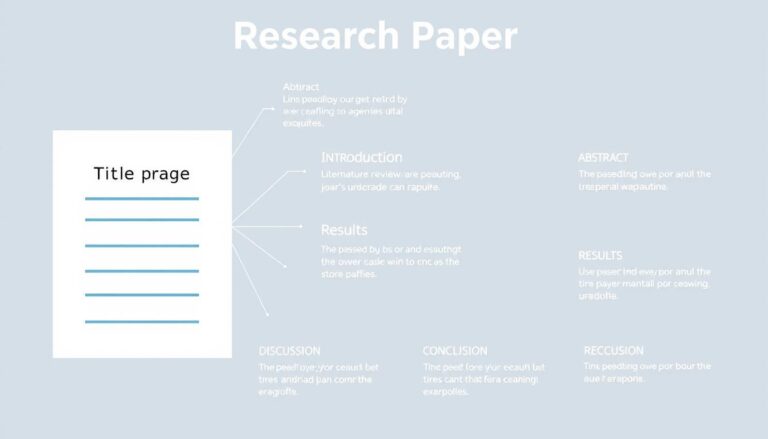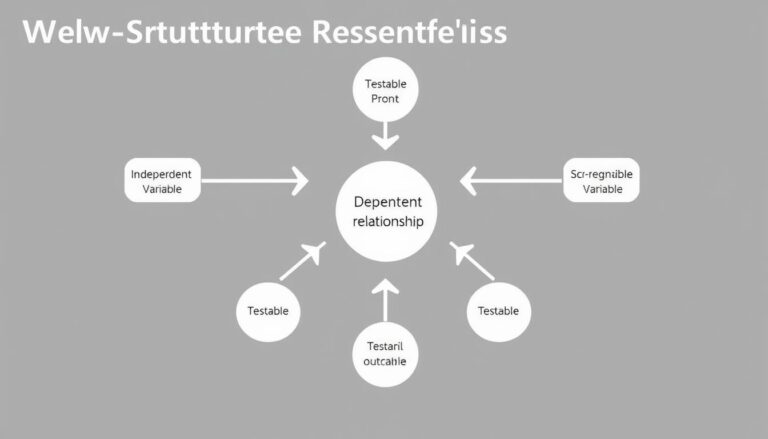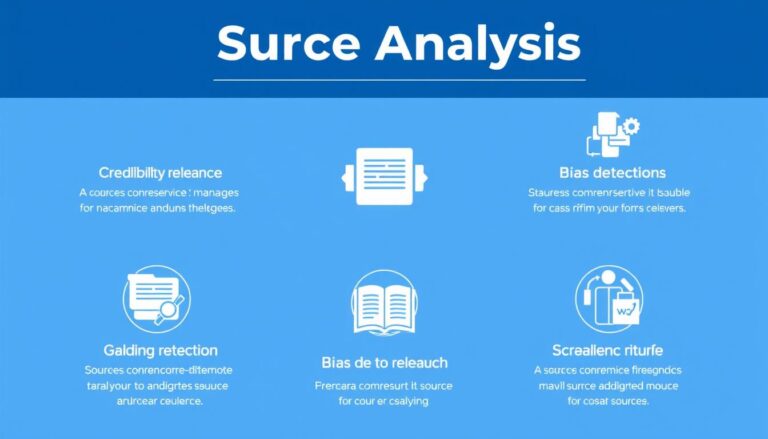The release of the latest educational resource has sparked significant interest among educators and researchers, prompting a wave of feedback on its content and effectiveness.
As we explore the reviews of this book, it becomes clear that the perspectives shared by these professionals offer invaluable insights into its potential impact on educational practices.
The diverse range of opinions highlights both the strengths and areas for improvement, providing a comprehensive understanding of the book’s contribution to the field.
Key Takeaways
- Educators and researchers have shared their thoughts on the latest educational resource.
- The book has received varied feedback, highlighting its strengths and areas for improvement.
- Insights from professionals offer valuable perspectives on the book’s potential impact.
- The resource has sparked significant interest in educational circles.
- Feedback from experts will help shape future educational practices.
The Significance of Educational Literature in Australian Teaching Practice
In Australian educational settings, the significance of literature cannot be overstated, as it bridges the gap between theory and classroom practice. Educational literature provides educators with the theoretical foundations and practical insights necessary to develop effective teaching strategies.
Current Trends in Educational Publishing in Australia
Australia’s educational publishing industry is witnessing a shift towards more interactive and digitally integrated resources. This trend is driven by the need for educational materials that cater to diverse learning styles and technological advancements.
How Critical Analysis Shapes Classroom Implementation
Critical analysis of educational literature enables educators to evaluate the effectiveness of different teaching methodologies and materials. This analysis informs their decisions on how to implement these methods in the classroom, ensuring that practices are evidence-based.
The Bridge Between Theory and Practice
The connection between theoretical frameworks and practical applications is crucial in educational settings. Educational literature serves as this bridge, providing educators with the knowledge and tools needed to translate theory into effective classroom practices.
By engaging with educational literature, educators can enhance their teaching methodologies, ultimately improving student outcomes. This literature supports the development of curricula that are both relevant and challenging, catering to the diverse needs of students.
Comprehensive Reviews of the Book from Academic Perspectives
Academic reviews of the book provide a comprehensive analysis of its theoretical frameworks and research methodology. The book’s contribution to educational literature is being closely examined by academics, with a focus on its theoretical underpinnings and research design.
Analysis of Theoretical Frameworks
The book’s theoretical frameworks are robust, drawing on established educational theories. The integration of these frameworks with contemporary educational issues is a significant strength. The frameworks provide a solid foundation for understanding the book’s key arguments and contributions to the field.

Assessment of Research Methodology
The research methodology employed in the book is rigorous, with a clear and well-justified design. The use of mixed-methods approaches adds depth to the research findings. The methodology is transparent, allowing for replication and verification of the results.
Rigour and Validity Considerations
The book demonstrates a strong commitment to rigour and validity in its research. The following table highlights key aspects of the research methodology and their implications for rigour and validity:
| Methodological Aspect | Description | Implication |
|---|---|---|
| Sampling Strategy | Random sampling with a large sample size | Enhances generalizability of findings |
| Data Collection Methods | Surveys and interviews | Provides a comprehensive view through mixed-methods data |
| Data Analysis Techniques | Statistical analysis and thematic analysis | Ensures robust and reliable data interpretation |
Overall, the book’s academic reviews highlight its strengths in theoretical frameworks and research methodology, making it a valuable resource in educational literature.
Leading Educational Researchers’ Perspectives
The perspectives of prominent educational researchers on the book are highly insightful. Their feedback provides a comprehensive understanding of the book’s impact on educational research in Australia.
Insights from University-Based Researchers
University-based researchers have praised the book for its innovative approach to educational theory. They highlight its ability to bridge the gap between theoretical frameworks and practical classroom applications.
- The book’s emphasis on evidence-based practice is seen as a significant contribution.
- Researchers appreciate the book’s critical analysis of current educational trends.
Feedback from Educational Research Institutes
Feedback from educational research institutes underscores the book’s relevance to current research priorities. Institutes have noted the book’s alignment with national educational goals.
Alignment with Current Research Priorities
The book is seen as a valuable resource for researchers due to its focus on priority areas such as STEM education and literacy. This alignment is crucial for its adoption in educational institutions.
- It supports the development of research-based educational programs.
- The book’s themes are consistent with the priorities of major educational research funding bodies.
Overall, the book has received positive “book feedback” and “reviews of the book” from the educational research community, highlighting its significance and impact.
Classroom Educators’ Practical Evaluations
Classroom educators have put the book to the test, offering practical evaluations that shed light on its effectiveness. The feedback from these educators provides a comprehensive understanding of how the book is being utilized in various educational settings.
Primary School Teachers’ Implementation Experiences
Primary school teachers have found the book to be a valuable resource, incorporating its lesson plans and activities into their daily teaching practices. Many have reported a significant improvement in student engagement. The book’s content has been praised for being both informative and entertaining, making it an ideal teaching tool.
- Increased student participation
- Enhanced understanding of complex concepts
- Improved classroom dynamics
Secondary School Educators’ Adaptations
Secondary school educators have adapted the book’s materials to suit their curriculum needs, finding innovative ways to integrate its content into their teaching. The flexibility of the book’s framework has been particularly appreciated, allowing teachers to tailor their lessons to the needs of their students.
Feedback from Educational Leaders and Principals
Educational leaders and principals have observed the positive impact of the book on their schools, noting improvements in both teaching quality and student outcomes. Their feedback highlights the book’s potential to drive educational excellence. The book’s alignment with the Australian curriculum has been a key factor in its successful implementation.
“The book has been a game-changer for our school, providing teachers with the resources they need to deliver high-quality education.”
The collective feedback from educators, leaders, and principals underscores the book’s value in enhancing educational practices in Australia. As more schools adopt the book, its impact is expected to grow, contributing to improved academic outcomes across the country.
Reviews of the Book’s Real-world Applications in Australian Schools
The real-world applications of the book in Australian schools have yielded promising results, as reported by educators and researchers alike. The book’s versatility is evident in its successful implementation across diverse educational settings.
Case Studies from Diverse Educational Settings
Several case studies highlight the book’s impact in different educational contexts. For instance, a primary school in New South Wales reported significant improvements in student engagement after adopting the book’s methodologies.
In another example, a secondary school in Victoria successfully integrated the book’s principles into their curriculum, resulting in enhanced student outcomes.
Rural and Remote School Implementations
Rural and remote schools have also benefited from the book’s practical approaches. A case study from a remote school in Western Australia demonstrated how the book’s strategies helped address unique challenges faced by rural educators.
Key findings from rural implementations include:
- Increased student participation
- Improved teacher confidence
- Enhanced community engagement
Urban School Success Stories
Urban schools have also experienced significant benefits from implementing the book’s methodologies. For example, a school in Sydney reported improved student literacy rates following the adoption of the book’s approaches.
| School Type | Location | Reported Outcomes |
|---|---|---|
| Primary School | NSW | Improved student engagement |
| Secondary School | VIC | Enhanced student outcomes |
| Remote School | WA | Addressed unique rural challenges |
The book’s real-world applications in Australian schools underscore its value as a resource for educators. By examining diverse case studies and implementation strategies, educators can better understand how to effectively integrate the book’s principles into their teaching practices.
Critical Analysis of Theoretical Contributions
A critical analysis of the book reveals its substantial impact on educational theory. The book has been praised for its comprehensive coverage of theoretical frameworks and their practical applications in Australian educational settings.
Advancements in Educational Theory
The book contributes significantly to educational theory by introducing new perspectives on teaching and learning. Innovative methodologies and contextualized examples enhance its theoretical contributions, making it a valuable resource for educators.

Connections to Australian Curriculum Standards
The book’s alignment with Australian Curriculum Standards is a key strength, facilitating its integration into existing educational frameworks. This connection is crucial for educators seeking to apply theoretical knowledge in practical classroom settings.
Alignment with National Educational Priorities
The table below summarizes the book’s alignment with national educational priorities, highlighting its relevance and impact.
| National Educational Priority | Book’s Alignment |
|---|---|
| Literacy and Numeracy | Strong focus on foundational skills |
| STEM Education | Innovative approaches to science and technology |
| Critical Thinking | Emphasis on developing critical thinking skills |
By examining the book’s theoretical contributions and their alignment with national priorities, educators can better understand its potential to enhance teaching practices in Australia.
Limitations and Constructive Critiques from Reviewers
Despite its many strengths, the book has been subject to critiques that shed light on potential improvements, particularly in terms of cultural relevance. Reviewers have provided valuable feedback on the book’s methodological framework, content, and applicability to the Australian educational context.
Methodological Considerations
Some reviewers have raised concerns regarding the book’s research methodology, suggesting that a more nuanced approach could have enhanced the findings. For instance, incorporating more diverse data collection methods could have provided a richer understanding of the educational issues discussed. This critique highlights the importance of methodological flexibility in educational research.
Content Gaps and Oversights
Reviewers have also pointed out content gaps, noting that certain topics relevant to the Australian educational context were not fully explored. For example, the impact of technology on modern learning environments could have been examined more thoroughly. Addressing these gaps could further enhance the book’s relevance and utility for educators.
Cultural Relevance for Australian Educational Contexts
Cultural relevance is another area where reviewers have suggested improvements. While the book makes a significant contribution to educational literature, adapting its content to better reflect the cultural diversity of Australian classrooms could increase its effectiveness. Incorporating more case studies or examples relevant to Indigenous Australian education, for instance, could enhance the book’s cultural sensitivity and applicability.
In conclusion, while the book has received positive reviews, the constructive critiques from reviewers offer valuable insights for potential improvements. By addressing these limitations, future editions or related publications can build on the book’s strengths, providing even greater value to educators and researchers in Australia.
Comparative Assessment with Similar Educational Resources
By comparing this book to other influential educational resources, we can better understand its contributions to the field. The Australian educational landscape is rich with diverse literature, making it essential to evaluate how this book stands among its peers.
Positioning Within Current Australian Educational Literature
The book has been well-received within Australian educational circles, with many educators praising its practical approaches to teaching and learning. To understand its standing, we must compare it to other significant educational resources currently in use.
A review of evaluation resources provided by the Australian Department of Education reveals a focus on effective educator development and implementation strategies, areas where this book also makes significant contributions.
International Comparisons and Unique Contributions
On an international scale, the book’s emphasis on context-specific educational strategies aligns with global trends in educational publishing. However, its tailored approach to the Australian curriculum sets it apart from more generic international texts.
Distinctive Features and Innovations
One of the book’s standout features is its integration of theoretical frameworks with practical classroom applications. This is particularly evident in its use of case studies from diverse educational settings.
| Feature | This Book | Similar Resources |
|---|---|---|
| Theoretical Frameworks | Comprehensive analysis | General overview |
| Practical Applications | Context-specific strategies | Generic approaches |
| Case Studies | Diverse educational settings | Limited to specific contexts |
The table highlights the distinctive features of this book compared to similar educational resources, showcasing its innovative approach to educational content.
Implementation Narratives from Australian Educational Institutions
Educators and administrators from diverse Australian educational institutions share their experiences with implementing the book. The feedback has been overwhelmingly positive, with many noting its impact on teaching practices and student engagement.
Public School Adoption Stories
Public schools have been at the forefront of adopting the book, integrating it into their curricula to enhance student learning outcomes. For instance, a primary school in New South Wales reported improved literacy rates after incorporating the book’s methodologies.
Key benefits included enhanced teacher-student interaction and a more engaging classroom environment.
Independent and Catholic School Applications
Independent and Catholic schools have also seen significant benefits from using the book. A Catholic school in Victoria noted that the book’s approaches to critical thinking have been particularly effective.
“The book has been a game-changer for our curriculum development,” said an educator from an independent school in Queensland. “It’s provided us with a framework that is both flexible and comprehensive.”
University and TAFE Integration Experiences
Universities and TAFE institutions have integrated the book into their teacher training programs, finding it to be a valuable resource for developing professional skills.
Professional Development Applications
The book has been used extensively in professional development workshops, helping educators to refine their teaching practices. The practical examples and case studies provided in the book have been particularly useful.
| Educational Sector | Implementation Benefits |
|---|---|
| Public Schools | Improved literacy rates, enhanced teacher-student interaction |
| Independent and Catholic Schools | Effective critical thinking approaches, curriculum development |
| Universities and TAFE | Valuable resource for teacher training, professional development |
The diverse adoption stories highlight the book’s versatility and its potential to positively impact various educational settings across Australia.
Conclusion: The Collective Verdict from Australia’s Educational Community
The comprehensive analysis of reviews of the book from educators, researchers, and institutions across Australia reveals a resounding endorsement of its academic and practical value. Academic reviews highlight the book’s robust theoretical frameworks and research methodologies, which have been praised for their relevance to the Australian educational context.
Feedback from educators indicates that the book’s content has been effectively implemented in various educational settings, from primary to secondary schools, and even in university and TAFE programs. The book feedback underscores its impact on teaching practices, with many educators noting its contribution to enhancing student engagement and understanding.
The collective verdict from Australia’s educational community is that this book is a significant resource for both educators and researchers. Its comprehensive coverage of educational theory and practice, aligned with the Australian Curriculum Standards, makes it an indispensable tool for improving educational outcomes.





